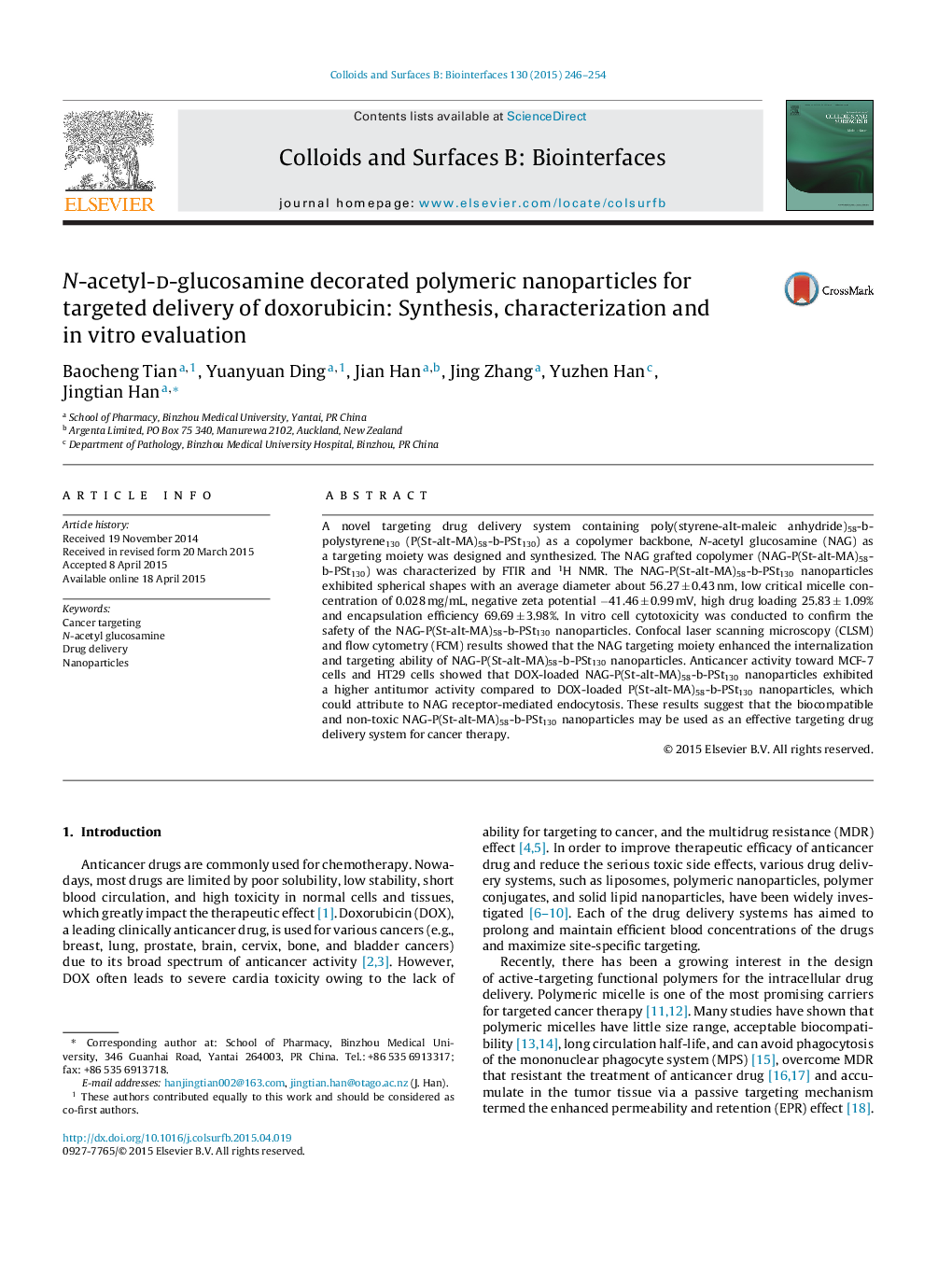| Article ID | Journal | Published Year | Pages | File Type |
|---|---|---|---|---|
| 599342 | Colloids and Surfaces B: Biointerfaces | 2015 | 9 Pages |
•NAG-P(St-alt-MA)58-b-PSt130 amphiphilic copolymer was synthesized and characterized.•The polymer can self-assemble into nanomicelles for DOX loading.•NAG decorated micelles demonstrate enhanced cellular uptake, antitumor activity and high compatibility.
A novel targeting drug delivery system containing poly(styrene-alt-maleic anhydride)58-b-polystyrene130 (P(St-alt-MA)58-b-PSt130) as a copolymer backbone, N-acetyl glucosamine (NAG) as a targeting moiety was designed and synthesized. The NAG grafted copolymer (NAG-P(St-alt-MA)58-b-PSt130) was characterized by FTIR and 1H NMR. The NAG-P(St-alt-MA)58-b-PSt130 nanoparticles exhibited spherical shapes with an average diameter about 56.27 ± 0.43 nm, low critical micelle concentration of 0.028 mg/mL, negative zeta potential −41.46 ± 0.99 mV, high drug loading 25.83 ± 1.09% and encapsulation efficiency 69.69 ± 3.98%. In vitro cell cytotoxicity was conducted to confirm the safety of the NAG-P(St-alt-MA)58-b-PSt130 nanoparticles. Confocal laser scanning microscopy (CLSM) and flow cytometry (FCM) results showed that the NAG targeting moiety enhanced the internalization and targeting ability of NAG-P(St-alt-MA)58-b-PSt130 nanoparticles. Anticancer activity toward MCF-7 cells and HT29 cells showed that DOX-loaded NAG-P(St-alt-MA)58-b-PSt130 nanoparticles exhibited a higher antitumor activity compared to DOX-loaded P(St-alt-MA)58-b-PSt130 nanoparticles, which could attribute to NAG receptor-mediated endocytosis. These results suggest that the biocompatible and non-toxic NAG-P(St-alt-MA)58-b-PSt130 nanoparticles may be used as an effective targeting drug delivery system for cancer therapy.
Graphical abstractFigure optionsDownload full-size imageDownload as PowerPoint slide
